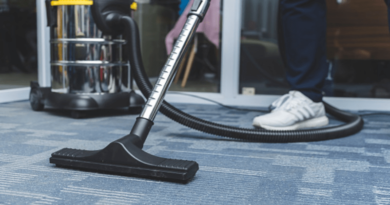Circuit Board Troubleshooting Tips
PCBs are a vital component of every electronic system. PCB is the shortened form of the printed circuit board. It is also known only as the circuit board. A single problem in your circuit board often leads to massive malfunction of the device. Thankfully there are a few techniques to troubleshoot such issues and make your PCB work normally again. Let us discuss some of those techniques in the paragraphs below. But before that let us list down the tools without which you cannot fix problems with your PCB.
Tools required to fix problems with your PCB
Troubleshooting techniques for a circuit board often prove to be an intensive process. Thus you need more tools than just a screwdriver. The kind of tools you need also depends on two other factors – the kind of circuit board you are dealing with and the type of issue you are troubleshooting. The common tools that you require include the following –
- A multi-meter
- A fine knife
- Soldering iron
- Electrical tape
- Isopropyl alcohol
- Wipes
An electrician near me says you will also require a magnifying glass in addition to the tools listed above. A magnifying glass immensely helps in your task of fixing problems in circuit boards.
Careful inspection of the visual elements
When you are fixing an electrical circuit board the first thing to do is visually inspect the entire circuit board. This helps identify the most obvious issues – like bad connection and overheated components. When there is any component error you will come across tiny brownish burn marks on a circuit board. Finding these brown burn marks is much easier. And this is why visual inspection is so important and one of the initial steps in repairing PCBs. Identifying these burn marks neither requires any special electrical knowledge or tool. To put it in easier words every such burn mark indicates an overheated component. Every such overheated component must be replaced with a new one.
In addition to that, any bulged component or a connection that appears dull and lifeless also indicates an error.
Inspection of the physical components
The next step involves the assessment of the physical components of the circuit board. This is done when the PCB is connected to an electrical circuit. When the circuit board is connected to the power supply you can find the hot spots that have developed on it. Issues of faulty connection or faulty components are easy to identify. The spots on the circuit board become much hotter than the rest. The heat difference is so high that you can feel it with your hand. You should not place both of your hands on a live circuit board at the same time. it could give you a fatal electric shock. Be careful to place only one hand on the circuit board at a time until it is disconnected from the source of the power supply.
Testing the individual components
What is the most assured way to test PCB component failure? According to experts testing each component individually using a multi-meter is the most convincing way. In this procedure, you can test each capacitor, resistor, and such other components. While testing, make sure that each component registers at or below the respective component value. This assures there is no problem with that particular component. On the other hand, if a component registers a higher value than what it is supposed to, in that case, you have a problem to deal with.
It is also important to test the integrated circuits
According to a well-known and competent electrician in London near me if there is one most challenging part in troubleshooting a PCB then that is testing the integrated circuits. This particular aspect of the job is even challenging for professionals. There is a valid reason behind this as well. Integrated circuits widely vary from one another. Moreover there exist a large number of speciality integrated circuits in a PCB. Thus, testing those specialty circuits turns out to be an uphill task.
Inspection of the power supply
You have to measure the voltage of the power rails using a multi-meter in order to fix any problem in the power supply. Make sure both the input and output values must match the expected values of the particular component. If the values do not match then there could be some problem. If the voltage reading is 0v, it means a short circuit has occurred somewhere along the power rail. This could either be a capacitor or a regulator. If that is really the case then the component in which the short circuit has occurred will heat up very fast. And you will feel that heating coming from the troubled zone.
Compare defective and normally functioning circuit boards
One of the easiest ways to diagnose issues is by comparing two matching circuit boards. But this is only feasible when there are two same PCBs in your hand. How will you do it? Here are two tried and tested tips –
- Visually compare the two circuit boards for burn marks and misplaced components. Make sure both the circuit boards are simply identical in every possible way. You should look for any differences to identify a particular problem.
- Use a multimeter to compare the behavior and functionality of both circuit boards. Ideally, those values must be identical to each other. But if there is a difference it might indicate a physical component issue.
Probing signals
The actual procedure of signal probing is a complicated task. it is beyond the expertise of non-professionals to perform that task. But it is possible for nonprofessionals to perform signal probing by using a multi-meter and waveform capture device. The process of signal probing is all about performing voltage tests and waveform capturing. You have to perform these activities at different test points. According to technically sound professionals electricians at the Electric Works London faulty PCBs are simply unavoidable from time to time. Thus hands-on knowledge of troubleshooting circuit boards proves useful. In reality, troubleshooting a PCB is quite a simple and uncomplicated process. PCB errors are nothing but human errors that occur at the time of manufacturing. But it is possible to identify those errors and even fix those. This saves you both time and money in the long run.



